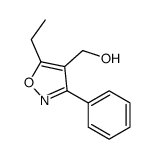16883-16-2
| Name | 5-Methyl-3-Phenylisoxazole-4-Carbonyl Chloride |
|---|---|
| Synonyms |
EINECS 240-915-4
5-Methyl-3-phenylisoxazole-4-carbonyl chloride MFCD00052205 5-methyl-3-phenyl-1,2-oxazole-4-carbonyl chloride |
| Density | 1.27 |
|---|---|
| Boiling Point | 371.9ºC at 760mmHg |
| Melting Point | 24 °C |
| Molecular Formula | C11H8ClNO2 |
| Molecular Weight | 221.64000 |
| Flash Point | >100 |
| Exact Mass | 221.02400 |
| PSA | 43.10000 |
| LogP | 3.02900 |
| Vapour Pressure | 9.97E-06mmHg at 25°C |
| Index of Refraction | 1.562 |
Synonym: Section 2 - COMPOSITION, INFORMATION ON INGREDIENTS
Risk Phrases: 22 34 Section 3 - HAZARDS IDENTIFICATION EMERGENCY OVERVIEW
Harmful if swallowed. Causes burns.Moisture sensitive. Potential Health Effects Eye: Causes eye burns. Skin: Causes skin burns. Ingestion: Harmful if swallowed. Causes gastrointestinal tract burns. Inhalation: Causes chemical burns to the respiratory tract. Chronic: Not available. Section 4 - FIRST AID MEASURES Eyes: Immediately flush eyes with plenty of water for at least 15 minutes, occasionally lifting the upper and lower eyelids. Get medical aid immediately. Skin: Get medical aid immediately. Immediately flush skin with plenty of water for at least 15 minutes while removing contaminated clothing and shoes. Ingestion: Do not induce vomiting. Get medical aid immediately. Inhalation: Get medical aid immediately. Remove from exposure and move to fresh air immediately. If not breathing, give artificial respiration. If breathing is difficult, give oxygen. Notes to Physician: Treat symptomatically and supportively. Section 5 - FIRE FIGHTING MEASURES General Information: As in any fire, wear a self-contained breathing apparatus in pressure-demand, MSHA/NIOSH (approved or equivalent), and full protective gear. Extinguishing Media: Use foam, dry chemical, or carbon dioxide. Section 6 - ACCIDENTAL RELEASE MEASURES General Information: Use proper personal protective equipment as indicated in Section 8. Spills/Leaks: Vacuum or sweep up material and place into a suitable disposal container. Section 7 - HANDLING and STORAGE Handling: Do not breathe dust, vapor, mist, or gas. Do not get in eyes, on skin, or on clothing. Use only in a chemical fume hood. Storage: Store in a cool, dry place. Store in a tightly closed container. Corrosives area. Store under nitrogen. Section 8 - EXPOSURE CONTROLS, PERSONAL PROTECTION Engineering Controls: Facilities storing or utilizing this material should be equipped with an eyewash facility and a safety shower. Use adequate ventilation to keep airborne concentrations low. Exposure Limits CAS# 16883-16-2: Personal Protective Equipment Eyes: Not available. Skin: Wear appropriate protective gloves to prevent skin exposure. Clothing: Wear appropriate protective clothing to prevent skin exposure. Respirators: Follow the OSHA respirator regulations found in 29 CFR 1910.134 or European Standard EN 149. Use a NIOSH/MSHA or European Standard EN 149 approved respirator if exposure limits are exceeded or if irritation or other symptoms are experienced. Section 9 - PHYSICAL AND CHEMICAL PROPERTIES Physical State: Solid Color: tan Odor: Not available. pH: Not available. Vapor Pressure: Not available. Viscosity: Not available. Boiling Point: Not available. Freezing/Melting Point: 24 - 25 deg C Autoignition Temperature: Not available. Flash Point: > 100 deg C (> 212.00 deg F) Explosion Limits, lower: Not available. Explosion Limits, upper: Not available. Decomposition Temperature: Solubility in water: Specific Gravity/Density: 1.27 Molecular Formula: C11H8ClNO2 Molecular Weight: 222 Section 10 - STABILITY AND REACTIVITY Chemical Stability: Not available. Conditions to Avoid: Incompatible materials, exposure to moist air or water. Incompatibilities with Other Materials: Strong oxidizing agents, bases, amines. Hazardous Decomposition Products: Hydrogen chloride, chlorine, nitrogen oxides, carbon monoxide, carbon dioxide. Hazardous Polymerization: Has not been reported Section 11 - TOXICOLOGICAL INFORMATION RTECS#: CAS# 16883-16-2 unlisted. LD50/LC50: Not available. Carcinogenicity: 5-Methyl-3-phenylisoxazole-4-carbonyl chloride - Not listed by ACGIH, IARC, or NTP. Section 12 - ECOLOGICAL INFORMATION Section 13 - DISPOSAL CONSIDERATIONS Dispose of in a manner consistent with federal, state, and local regulations. Section 14 - TRANSPORT INFORMATION IATA Shipping Name: CORROSIVE SOLID, ACIDIC, ORGANIC, N.O.S.* Hazard Class: 8 UN Number: 3261 Packing Group: III IMO Shipping Name: CORROSIVE SOLID, ACIDIC, ORGANIC, N.O.S. Hazard Class: 8 UN Number: 3261 Packing Group: III RID/ADR Shipping Name: CORROSIVE SOLID, ACIDIC, ORGANIC, N.O.S. Hazard Class: 8 UN Number: 3261 Packing group: III Section 15 - REGULATORY INFORMATION European/International Regulations European Labeling in Accordance with EC Directives Hazard Symbols: C Risk Phrases: R 22 Harmful if swallowed. R 34 Causes burns. Safety Phrases: S 26 In case of contact with eyes, rinse immediately with plenty of water and seek medical advice. S 36/37/39 Wear suitable protective clothing, gloves and eye/face protection. S 45 In case of accident or if you feel unwell, seek medical advice immediately (show the label where possible). WGK (Water Danger/Protection) CAS# 16883-16-2: No information available. Canada CAS# 16883-16-2 is listed on Canada's NDSL List. CAS# 16883-16-2 is not listed on Canada's Ingredient Disclosure List. US FEDERAL TSCA CAS# 16883-16-2 is listed on the TSCA inventory. SECTION 16 - ADDITIONAL INFORMATION N/A |
| Hazard Codes | C:Corrosive; |
|---|---|
| Risk Phrases | R22;R34 |
| Safety Phrases | S26-S36/37/39-S45-S26/36/37/39/45-S20 |
| RIDADR | UN3261 |
| Packaging Group | II |
| Hazard Class | 8 |
| HS Code | 2934999090 |
|
~92% 
16883-16-2 |
| Literature: VIRONOVA AB; HOMMAN, Mohammed; KINGI, Ngarita; BERGMAN, Jan; ENGQVIST, Robert Patent: WO2013/171334 A1, 2013 ; Location in patent: Page/Page column 23 ; |
|
~% 
16883-16-2 |
| Literature: US4544670 A1, ; |
|
~% 
16883-16-2 |
| Literature: Journal of Heterocyclic Chemistry, , vol. 49, # 3 p. 621 - 627 |
|
~% 
16883-16-2 |
| Literature: Journal of Heterocyclic Chemistry, , vol. 49, # 3 p. 621 - 627 |
|
~% 
16883-16-2 |
| Literature: Journal of Heterocyclic Chemistry, , vol. 49, # 3 p. 621 - 627 |
|
~% 
16883-16-2 |
| Literature: Journal of Heterocyclic Chemistry, , vol. 49, # 3 p. 621 - 627 |
| Precursor 6 | |
|---|---|
| DownStream 10 | |
| HS Code | 2934999090 |
|---|---|
| Summary | 2934999090. other heterocyclic compounds. VAT:17.0%. Tax rebate rate:13.0%. . MFN tariff:6.5%. General tariff:20.0% |


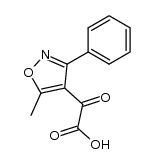


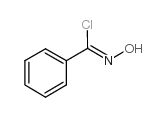

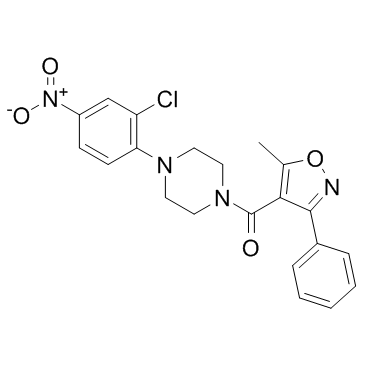
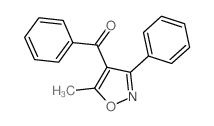
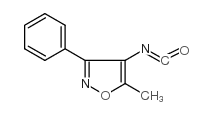
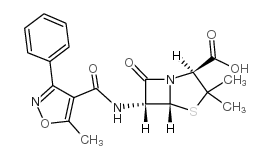
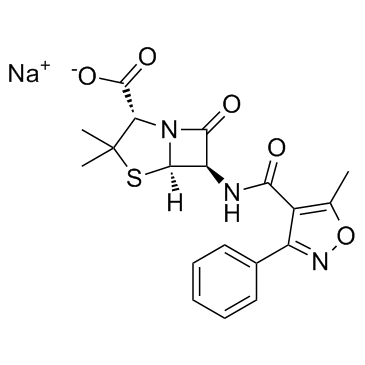
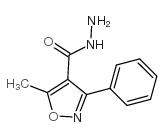
![Isoxazolo[4,5-c]pyridin-4(5H)-one,6-[4-[(dimethylamino)methyl]phenyl]-5-methyl-3-phenyl- structure](https://image.chemsrc.com/caspic/420/64769-68-2.png)
